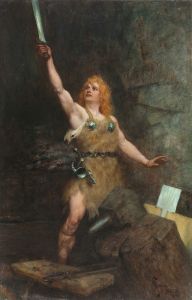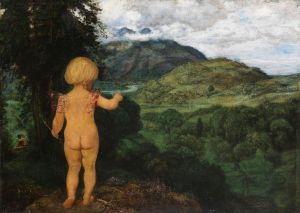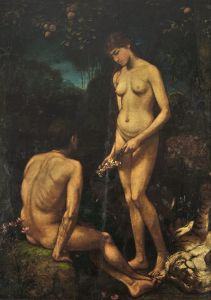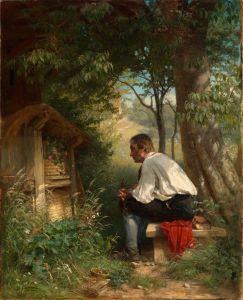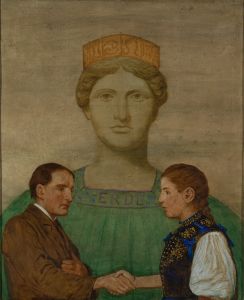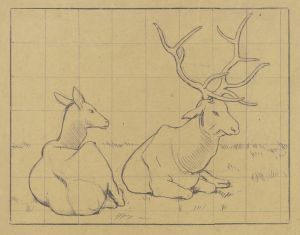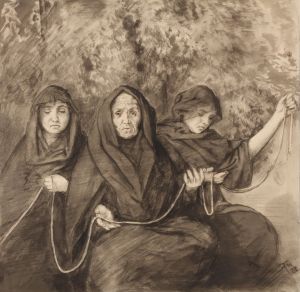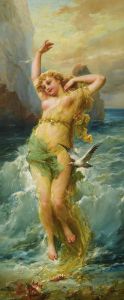
Die drei Nornen. Graue Gewander
A hand-painted replica of Hans Thoma’s masterpiece Die drei Nornen. Graue Gewander, meticulously crafted by professional artists to capture the true essence of the original. Each piece is created with museum-quality canvas and rare mineral pigments, carefully painted by experienced artists with delicate brushstrokes and rich, layered colors to perfectly recreate the texture of the original artwork. Unlike machine-printed reproductions, this hand-painted version brings the painting to life, infused with the artist’s emotions and skill in every stroke. Whether for personal collection or home decoration, it instantly elevates the artistic atmosphere of any space.
Hans Thoma was a German painter known for his landscapes and portraits, often infused with mythological and allegorical themes. One of his notable works is "Die drei Nornen. Graue Gewander" (The Three Norns. Grey Robes), which reflects his interest in Germanic mythology and the symbolic representation of fate.
The painting depicts the Norns, figures from Norse mythology who are akin to the Fates in Greek mythology. The Norns are three sisters named Urd, Verdandi, and Skuld, who are responsible for weaving the destiny of gods and men. They reside by the Well of Urd beneath the world tree, Yggdrasil, and their weaving determines the course of events in the universe.
In "Die drei Nornen. Graue Gewander," Thoma portrays the Norns in a serene and contemplative manner, dressed in grey robes that symbolize their connection to fate and the passage of time. The choice of grey may also reflect the somber and inevitable nature of destiny, a theme that resonates throughout mythological narratives. Thoma's use of color and composition emphasizes the mystical and timeless quality of the Norns, capturing their ethereal presence and the weight of their responsibilities.
Hans Thoma was born on October 2, 1839, in Bernau, in the Black Forest region of Germany. He studied at the Karlsruhe Academy of Fine Arts and later in Düsseldorf, where he was influenced by the Düsseldorf school of painting. Thoma's work is characterized by a blend of realism and symbolism, often drawing on themes from nature, folklore, and mythology. His style evolved over time, incorporating elements of Romanticism and Symbolism, which are evident in his depiction of the Norns.
Throughout his career, Thoma was associated with the Munich Secession, a group of artists who sought to break away from traditional academic art and explore new artistic expressions. His work gained recognition and appreciation during his lifetime, and he held several prominent positions, including director of the Kunsthalle Karlsruhe.
"Die drei Nornen. Graue Gewander" is a reflection of Thoma's fascination with the mystical and the mythical, as well as his ability to convey complex themes through his art. The painting is an example of how Thoma combined his technical skill with a deep understanding of the symbolic and allegorical potential of his subjects. It stands as a testament to his contribution to German art and his ability to capture the imagination of viewers through his exploration of mythological themes.
Hans Thoma's legacy continues to be celebrated in Germany, with several museums dedicated to his work, including the Hans Thoma Museum in Bernau. His paintings remain an important part of the cultural heritage of the region, offering insight into the artistic movements of the 19th and early 20th centuries. "Die drei Nornen. Graue Gewander" is a significant piece within this context, illustrating Thoma's unique approach to art and his enduring fascination with the interplay between myth and reality.






